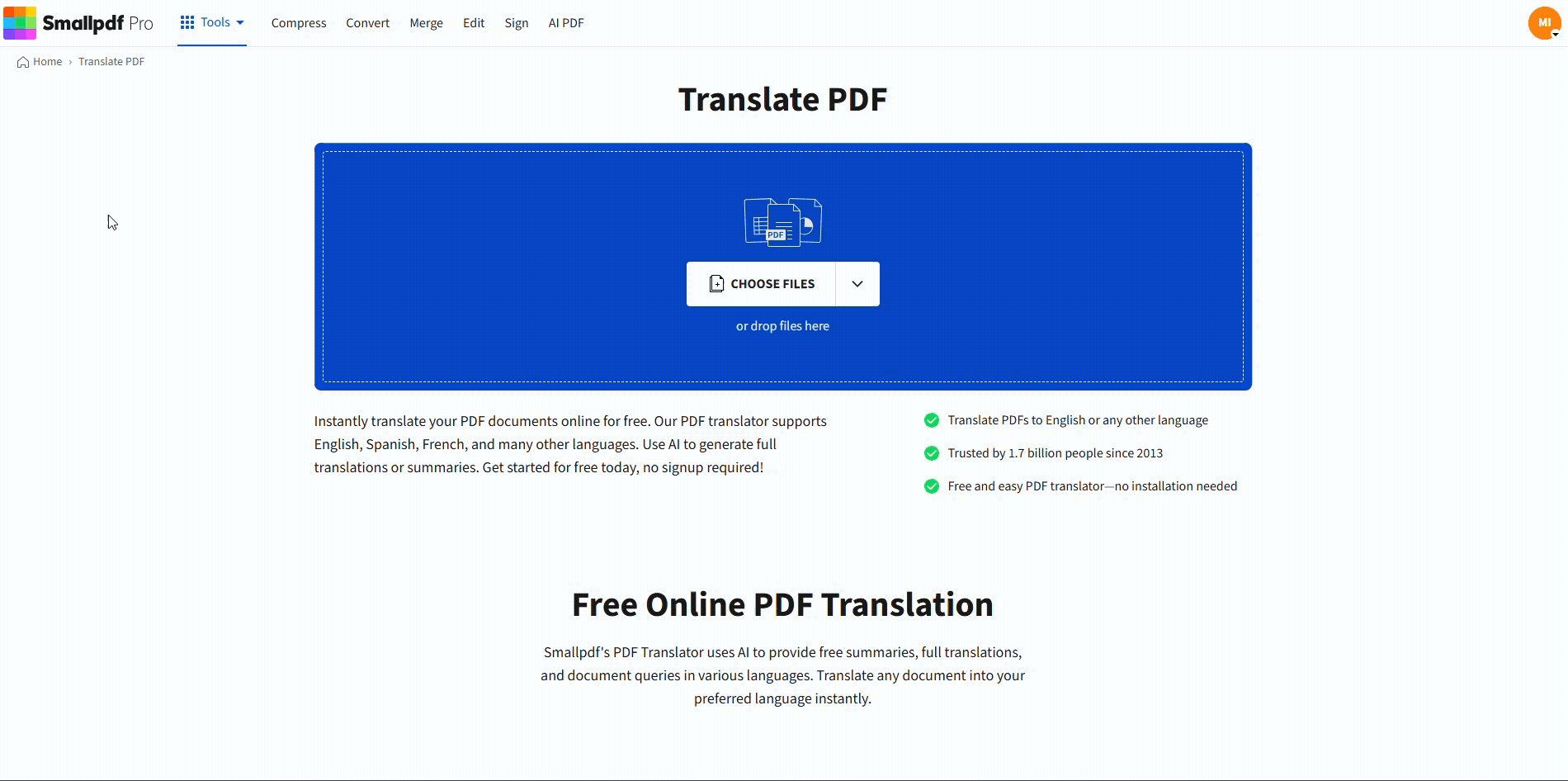Applying for a green card or visa? You’ll need to translate every non-English document — and yes, it has to be accurate, complete, and certified.
The U.S. government won’t accept rough summaries or automated tools. And while you don’t need to hire a certified translator with formal credentials, you do need a clear, accurate translation and a signed certification from the person who did the work.
Let’s walk through exactly how to translate immigration documents, what “certified” really means, and how Smallpdf can help you prepare and preview files before getting them officially finalized.
Which Documents Need Translation for Immigration?
Any supporting document in a foreign language must be translated into English. It doesn’t matter whether it applies to you or your sponsor — if it’s not in English, it must be translated.
Here are the most common documents that require translation:
- Birth certificates
- Marriage or divorce certificates
- Police records or clearance letters
- Bank statements
- Academic transcripts or diplomas
- National IDs, passports, or civil documents
- Medical records or vaccination history (if requested)
Every word matters — including official seals, signatures, and notes in the margins. Translations must be complete, not abbreviated or paraphrased.
What Does a “Certified” Translation Mean?
Good news: USCIS doesn’t require a professional translator with a license. But they do require a certification letter confirming that:
- The translation is accurate
- The translator is fluent in both English and the source language
- The translator includes their full name, signature, address, and the date
Here’s a standard format:
Certification by Translator
I, [translator’s full name], certify that I am fluent in English and [foreign language], and that the attached document is a true and accurate translation of [name of document].
[Signature][Date] [Address]
This letter must be typed and included with the translation. If you skip this step, USCIS can reject your application — even if the translation itself is correct.
Can You Translate the Documents Yourself?
Technically, yes — but it’s risky.
USCIS rules allow you or your sponsor to translate your own documents if you can certify the accuracy and your language fluency. But the final decision rests with the immigration officer reviewing your file.
Many applicants prefer to have a third-party translator handle this part — especially for key documents like birth or marriage certificates. It reduces risk and helps prevent delays.
How to Prepare Your Documents with Smallpdf
Before hiring a translator, many applicants use Smallpdf’s Translate PDF to preview or draft their documents in English. It’s especially helpful when:
- You want to check a foreign-language document before hiring a translator
- You’re preparing a first draft for review
- You’re translating supporting material not being submitted to USCIS (e.g. resumes or internal forms)
- You want to understand official letters or records before responding
Here’s how it works: 1. Go to Translate PDF 2. Upload your document (PDF, Word, Excel, or PowerPoint) 3. Select “Entire Document” or “Summary” 4. Choose your source and target languages 5. Click Translate 6. Download your translated version for review

Translate a Document Yourself
It’s fast, accurate, and preserves the original layout.
Keep in mind: Translate PDF does not produce certified translations. But it helps you get organized and informed before submitting your official paperwork.
At What Stage Are Translations Required?
You’ll typically submit your translated documents with your initial immigration package. However, translations might also be required later if:
- USCIS issues a Request for Evidence (RFE)
- You attend an interview and must bring originals and translated copies
- A consulate requests documents for consular processing
- You're adjusting status and responding to a new inquiry
Always include the translated document, the original (or a photocopy), and the translator’s certification letter.
Does the Translation Need to Be Notarized?
No — USCIS does not require notarization.
Some embassies or consulates abroad may request notarized translations, but this isn’t standard for USCIS.
Popular PDF Translation Pairs
- Spanish to English
- Chinese to English
- Arabic to English
- French to English
- Korean to English
- German to English
FAQs
Can I translate my own documents for immigration?
Yes, but it’s not recommended. You must still provide a signed certification letter, and USCIS may reject self-translations at their discretion.
How do I get documents translated for USCIS?
You can use a qualified friend, family member, or professional service. They must provide a certified statement with full contact info and signature.
What is a certificate of translation for immigration?
It’s a short, formal statement written by the translator confirming that the translation is accurate and that they’re fluent in both languages.
How much does USCIS-certified translation cost?
Prices vary, but expect to pay $20–$40 per page for professional translation services in the U.S.
Does USCIS accept Google Translate?
No. Translations must be human-reviewed and accompanied by a certification letter. Machine translation alone is not accepted.



